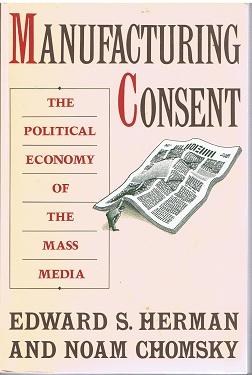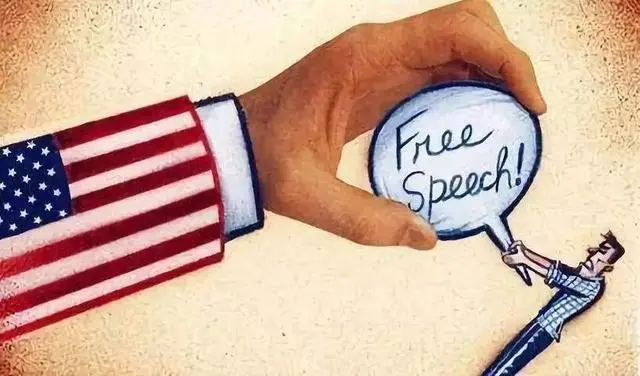
Edward S. Herman and Noam Chomsky, 1988, in Manufacturing Consent: The Political Economy of the Mass Media expresses that the media is not a tool of independent supervision of power as claimed by liberals, but is controlled by a few rich and powerful people, who are used to shape public perceptions and opinions, and ultimately defend their interests the point of view.
A Propaganda Model describes five key “filters” influencing how media is produced and distributed.
Through these five “filters,” the media screens out news content that is in the interests of the ruling class and ignores or suppresses those that are not.
1. Size, Ownership, and Profit Orientation.
Media organizations are usually large corporations to maximize profits, and most media are controlled by large corporations or wealthy individuals. Because they are often owned by large conglomerates, their interests are also aligned with those of other powerful corporate and political elites, which sets the tone of the media and leads to coverage that favors the status quo. Imagine how a media company owned by a multinational consortium could publish articles against big business daily.
2. The Advertising License to Do Business
To survive, the media depend on advertising for revenue, which makes them vulnerable to the interests of advertisers. If you publish an article that annoys those advertisers, will your media survive when they pull their ads? The answer, of course, is no. This leads the media to avoid potentially alienating advertisers or not challenging their core interests.
3. Sourcing Mass Media News
The media often rely on official sources such as governments or businesses and experts as sources of information. These sources can shape the narrative by controlling the flow of information and marginalizing alternative or opposing voices. So, the facts we see in the news have been wrapped up in layers to ensure that the information does not threaten the beneficiaries.
4. Flak and the Enforcers
Media organizations face “Flak” or backlash (e.g., complaints, lawsuits, or negative press) from powerful groups when they report in ways that challenge elite interests. Over time, a system of “self-censorship” developed within the media, in which journalists knew what to say and what not to say.
Take the example in the video below.
2023 Tucker Carlson, a well-known American TV host, is fired for reporting something related to Ukraine and Zelensky.
5. Anti-communism
Like the fear of communism during the Cold War or modern terrorism, the media creates fear and controls public opinion by constructing an “enemy image.” When people have a common enemy, they unite. When the public has the same ideology, they are easier to manipulate. Anti-communist ideology thus served as a mechanism of political control. The anti-Communist control system extended throughout the organization and then had a strong influence on the mass media. Use the mass media.
Conclusion
We live in a seemingly free, open society. But the reality is that our opinions and ideas are largely controlled by a few people. Instead of telling us the truth, the media influence our view of the world through carefully crafted messages. So we need to keep thinking and learn to sift through information.
References:
- Wikipedia for manufacture consent: https://en.wikipedia.org/wiki/Manufacturing_Consent (Accessed: 18 November 2024).
- About Tucker Carlson event description: https://www.theguardian.com/media/2023/oct/31/tucker-carlson-fox-news-book-brian-stelter (Accessed: 18 November 2024).


This blog really made me think deeply! The topic of ‘consent’ is quite complex, especially regarding the issue of free will mentioned in the article. We often think that we are making ‘free choices’, but in fact, there may be countless social rules, cultural influences, and even technological algorithms pushing us to move forward. Just like when we order food, do you really want to eat fried chicken, or are you “induced” by app recommendations and discount coupons? After reading it, I began to doubt how much of my daily decisions were “voluntary”. Overall, very inspiring!
This life can sometimes feel like The Truman Show. Amazingly, we have similar views on this topic. Thank you!
The style of your blog is really nice and clear, you have clear headings and your information is really well set out. You clearly explain manufacturing consent, and you do it in a way that makes it really understandable for the reader. This really makes us think about whether the world we live in is free, and whether consent is considered as a whole. I think one way your post would benefit is to link it to the real world we live in currently, are there any modern examples you can link to manufacturing consent? The one you used you didn’t explain thoroughly, so maybe do that!
Thanks for the advice. You’re right. We’re on the same page. At the time of writing, I was considering whether to combine real life with more details, but the connection of this topic needed to be cleared. Next time, I will clearly combine theory with real-life things. Thank you.
As I understand it, you mentioned the numerous obstacles in the flow of information. To pass through these filters, one must meet the various demands of the influential figures. Content they don’t want to see might not even appear before the public at all. This made me wonder—how much of the information we see now is genuine? How much of society is packaged into the image others want us to see? These questions are difficult to answer, but it’s important not to stop thinking about them.